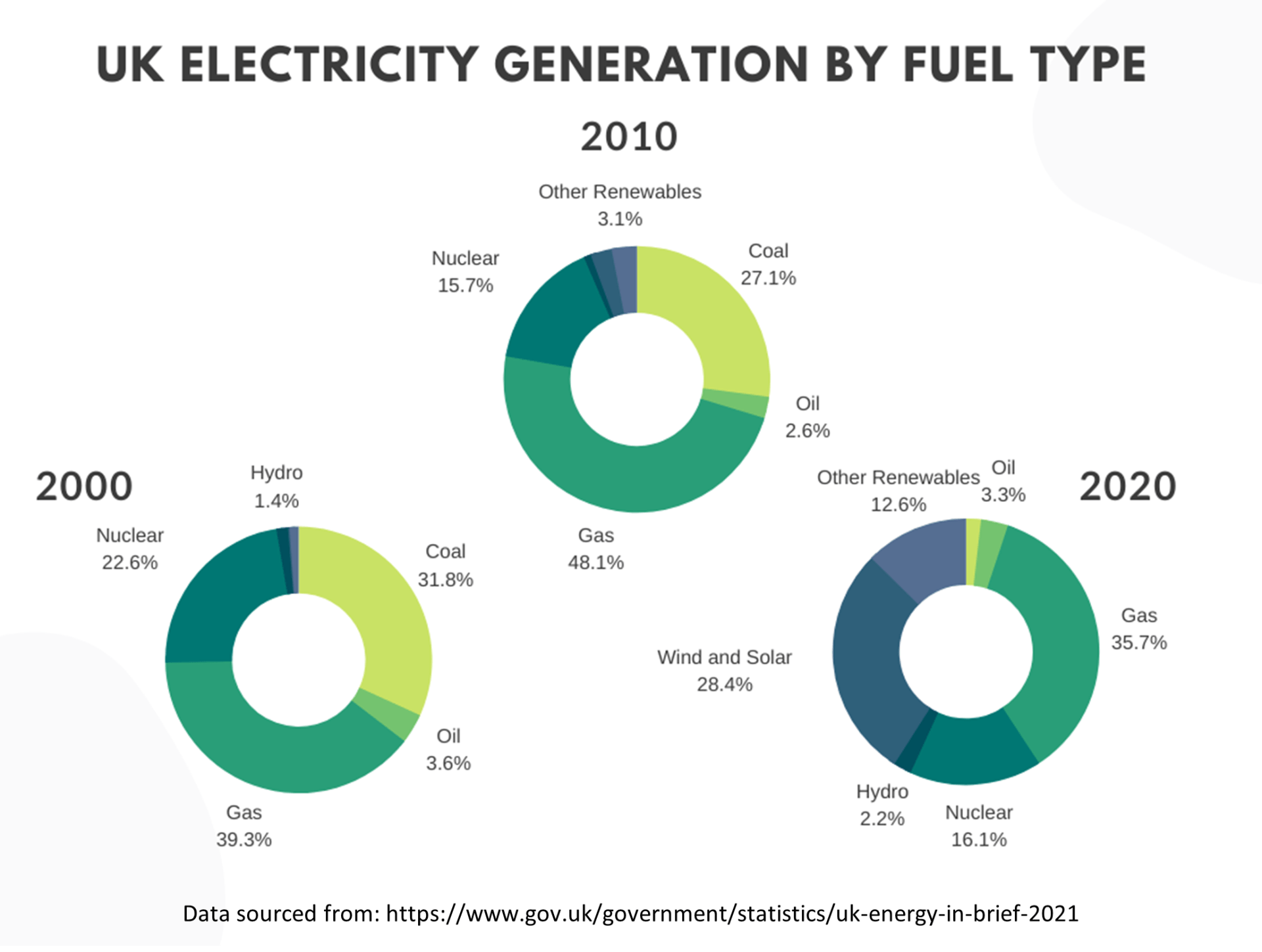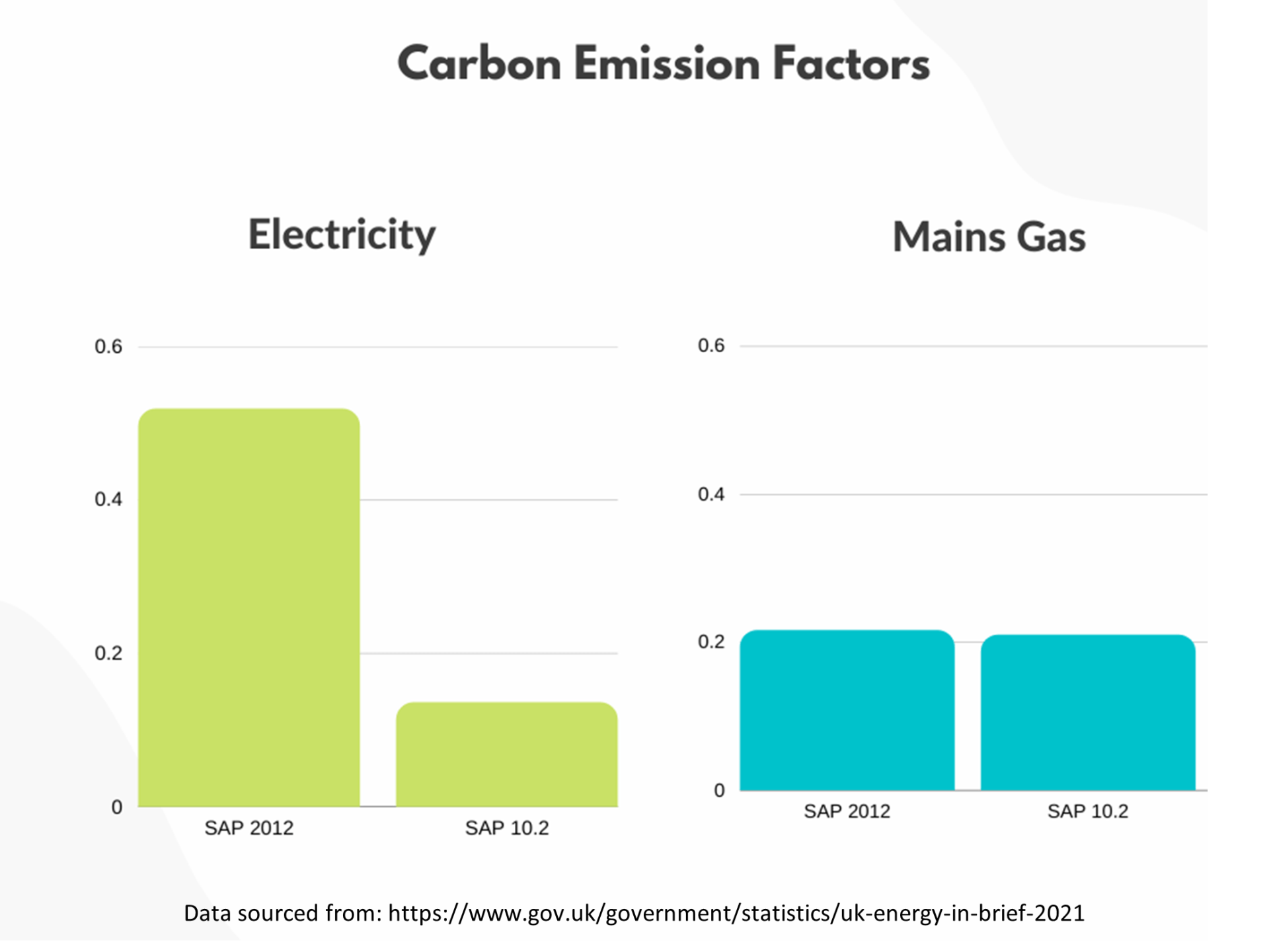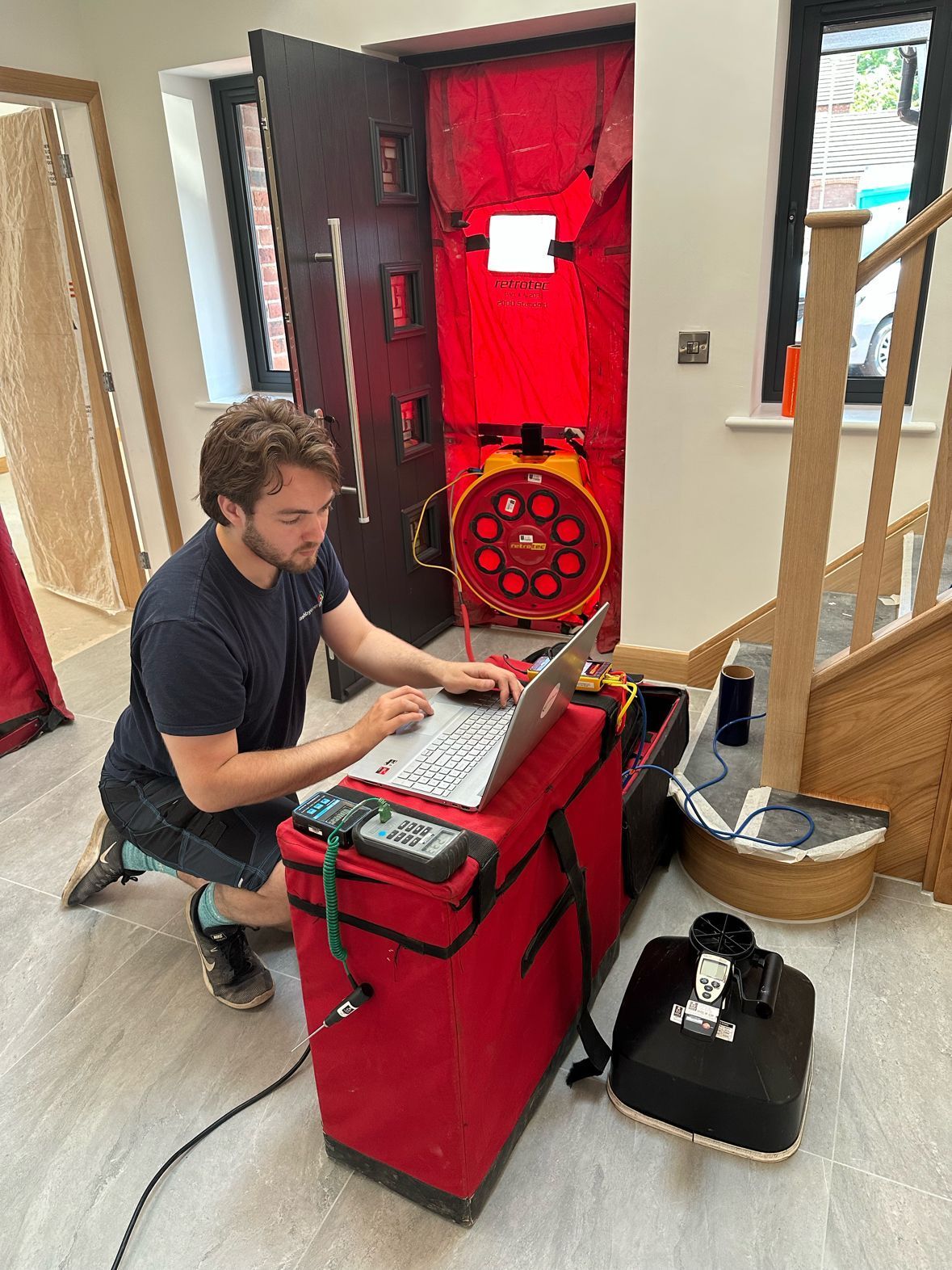The impact decarbonisation of the UK national grid has on SAP assessments
The history of grid decarbonisation in the UK
At the turn of the century electricity generation was dominated by coal and gas which accounted for 71.1% of electricity generated in the UK whereas renewable sources only contributed 2.7%.
In 2010 the story was not so different. Coal and gas still dominated electricity generation in the UK (74.1%) and little progress was made with renewable sources (6.86%).
However, a decade later we are now seeing a significant increase in renewable energy sources with renewables accounting for 43.1% of electricity generation and coal and gas accounting for 37.5% in a trend that shows no sign of stopping.

The changes in carbon emission factors
The decarbonisation of the national grid has been reflected within SAP. The carbon emissions factors for electricity in the most recent version of SAP (SAP 10.2) have dropped by more than half from the previous version (SAP 2012) to 0.136kg CO2 per kWh.

The impact of decarbonisation on SAPs
For the first time electricity is now recognised as a less carbon intensive fuel source than mains gas which has remained consistent around 0.21kg CO2 per kWh.
Mains gas has traditionally been used to supply hot water and space heating for buildings, with electricity supplying lighting and auxiliaries. Now that electricity is less carbon intensive than mains gas we may see a rise in alternatives to gas boilers such as heat pumps to supply hot water and space heating via electricity or more radical techniques such as solar hot water (also known as ‘solar thermal’).
Heat pumps currently provide some benefit over gas boilers within SAP regardless of the higher carbon emissions factors of electricity versus gas due to having a higher COP (coefficient of performance). Within SAP 10.2 the higher COP and lower electricity costs while give heat pumps huge benefit over gas boilers.
This switch could be the difference between a building achieving or failing compliance with Building Regulations Part L.
Ashby Energy Assessors Blog and News


Contact Us
We will get back to you as soon as possible
Please try again later
Directory
Contact Information
01476 870504
info@ashbyenergy.co.uk
Ashby Energy Assessors Ltd
Head Office
Landrace Lodge
Friars Well Estate
Wartnaby
Melton Mowbray
Leicestershire
LE14 3HQ
All Rights Reserved | Ashby Energy Assessors | Design & Build By Kangaroo UK


